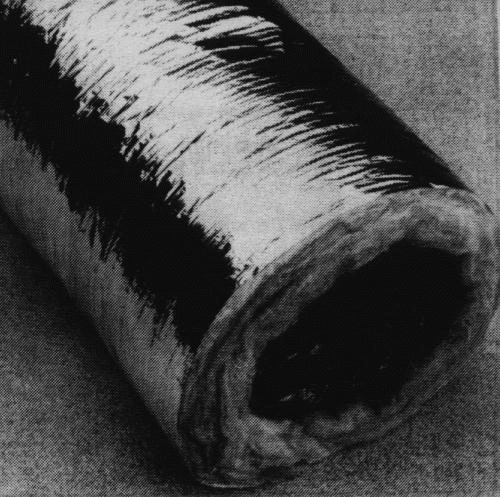WRAPPIN' DUCTS
- GOAL:
- Make students aware of energy waste from poorly insulated HVAC ducts.
- OBJECTIVES:
- The student will be able to:
- 1. Demonstrate the difference in heating and cooling equipment capacity loss through duct insulation.
- 2. Understand a cost demonstration showing what this capacity loss costs customers in electricity.
- LESSON / INFORMATION:
- Heated and cooled air is moved through ducts to get to the areas where it is needed throughout the house. Along the way heat can either enter or leave the ducts due to poor insulation. Duct loss in our area can range from 5% to 25% during the heating season. Duct gains can range from 10% to 30% during the cooling season. This means a unit producing 80,000 Btus of heat and 36,000 Btus of cooling could only provide 60,000 Btus of heat and 25,200 Btus of cooling with deteriorated duct wrap. Most older homes have insulation that has been pulled off the ducts or has fallen off due to deterioration. The above example shows the losses they will experience.

- Even a new home with a well wrapped duct system can experience 5% loss during heating and 10% gain during cooling. The above example would yield 76,000 Btus of heat in winter and 32,400 Btus of cooling in the summer. Ducts routed through unconditioned spaces, such as attics, are the most susceptible to high losses.
- Ducts routed through conditioned spaces, such as in-between floors or in a furred down chase, require less insulation and have very low loss. The closer the temperature of the surrounding air to the air in the duct, the lower the loss will be.
- Example Calculation:
- 36000 Btu/8.0 SEER x 2100 Cooling Hours/1000Constant x .07 Elec. Rate = $661.50 Annual Operating Cost
- Example 1:
- 10% Gain = $661.50 x 1.10 = $727.65 Annual Operating Cost
- Example 2:
- 30% Gain = $661.50 x 1.30 = $859.95 Annual Operating Cost
- Difference in 10% Gain and 30% Gain = $859.95 - 727.65 = $132.30
- The two examples provide a substantial difference in the amount of conditioned air provided to the living area. Poor duct insulation wastes energy and is more costly to the consumer. Based on an 8 SEER 36,000 Btu cooling system, the cooling loss alone would cost about $132.30 per year in operation. This is based on $0.07 per kilowatt hour of electricity and 2100 hours of cooling per year.
- ACTIVITY 1:
- Figure the cost of duct loss on a 10.00 SEER 36,000 Btu Cooling System with a $529.20 Annual Operating Cost.
- (1) No Duct Gain:
- (2) 10% Duct Gain:
- (3) 20% Duct Gain:
- (4) 30% Duct Gain:
- INFORMATION CHECK
- 1. Why is it important to wrap HVAC ducts:
- a. in winter?
- b. in summer?
- 2. What is the problem in most older homes?
- a. What percent of heat is usually lost during the winter (heating season)?
- b. What percent of heat is usually gained during the summer (cooling season)?
- c. How could people with older homes save on heating and cooling costs?
- TEACHER'S NOTES
- ANSWER TO ACTIVITY:
- (1) $529.20 x 1.00 = $529.90
- (2) $529.20 x 1.10 = $582.12
- (3) $529.20 x 1.20 = $635.04
- (4) $529.20 x 1.30 = $687.96
- A 30% loss will cost $158.76 a year more in energy consumption.
- ANSWERS TO INFORMATION CHECK:
- 1a. In the winter, heat intended to warm the home, can leak out of poorly insulated ducts. Thus energy and money was used to heat air that never reached the home's interior.
- 1b. In the summer, outside or attic heat can infiltrate the duct system and heat the cooled air. Thus energy and money has been spent to create cooled air, yet warm air has infiltrated the duct system and re-warmed the air.
- 2. Many older homes have additional insulation in their duct systems thus allowing heat gains and losses.
- a. 5 - 25%
- b. 10 - 30%
- c. People with older homes should inspect all duct areas and replace or repair any damaged or lost insulation.
Comments or questions to: TechAsmt@LA.GOV
Return to HVAC Menu

